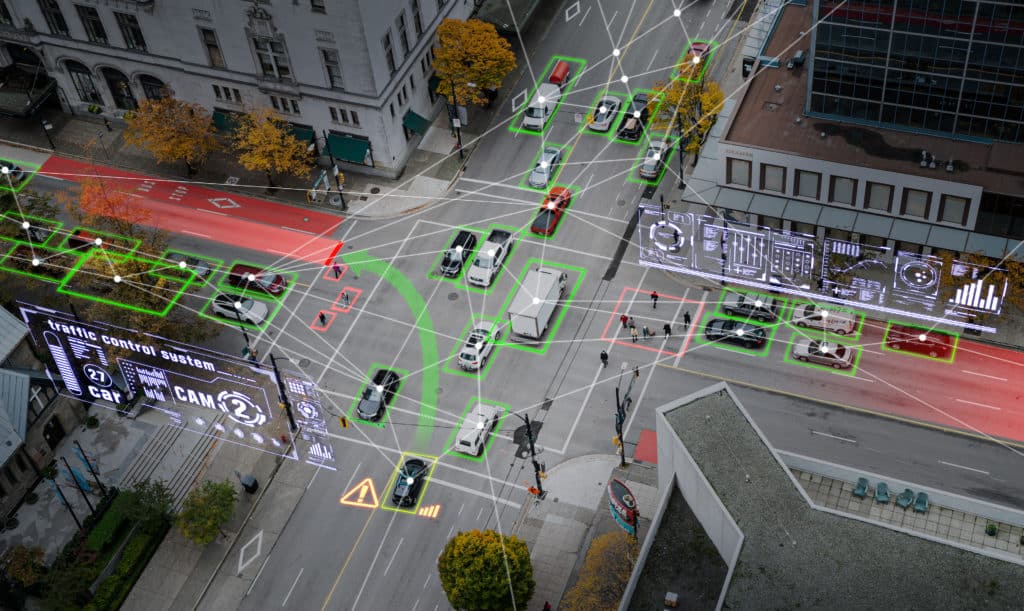
The “smart cities” projects have been fully developed, and video analytics is being actively used in them. Today, we’ll be discussing how video analysis from surveillance cameras helps control urban areas, making the environment safer and the residents happier.
Increased safety in rapid transit systems
Every year, hundreds of people fall into subway and light rail tracks. Some of the causes of these incidents include crowding, fights, sudden health problems such as dizziness or heart attack, as well as those who deliberately jump in front of the train. Even if there are no fatalities, the consequences entail delays for tens of thousands of passengers.
Sometimes bystanders have time to react, to contact the station’s personnel. However, computers can act much faster in such situations. Video analytics systems can instantly “see” a person on the tracks, automatically giving trains the red light and sounding an alarm.
Traffic congestion
In the cities of the future, there will be fewer personal cars, and accordingly, fewer traffic jams (which cost $ 87 billion worldwide in 2018 [1]). So this means that public transport needs to be convenient. One solution is to plan routes and intervals in relation to passenger traffic.
For example, when there are too many people at a particular station and more buses are needed on line 310, line 552 can change its route to pick the passengers up. It’s necessary to continuously count the people at the stations for this to be achieved, and this is where video analytics can help.
Drivers will also benefit from the analysis of data from cameras: a system that evaluates road conditions in real time, thereby creating an optimal travel plan without aggravating existing congestion, and reporting on the availability of parking spaces (30% of traffic congestion is directly caused by lengthy searching for parking [2]).
Prevention of incidents on the road
Video analytics provides automatic detection of accidents and anomalies on the roads, such as broken traffic lights and road surface damage.
This data can also be used to identify hazardous areas and figure out how to work with them. For example, if there are too many pedestrians trying to cross a high-speed traffic zone, either a traffic light or barrier needs to be installed.
Reducing garbage collection costs
Every year, countless tons of household waste are produced worldwide. The issue of timely garbage collection is acute in modern metropolises. Nonetheless, every trip a garbage truck makes comes at a cost for the residential area.
Containers in residential complexes become filled up unevenly. How to make the truck’s route as efficient as possible, so as not to idle around the “empty” points, but to be sure they get to where the containers are already full? City video surveillance is part of the solution, but data verification and manual routing are not easy.
Video analytics can speed up the process: it can analyze the level of filling of containers and the quality of their unloading. A similar idea is already being used by McDonald’s restaurants and Nordstroms department stores in the USA [3], saving thousands of dollars on each dumpster annually. On average, domestic waste collection costs are reduced by 40% [4]. And the integration of video analytics with third-party services allows for automatic vehicle routing.
Security for mass events
Concerts, sporting events, and similar events gather tens of thousands of people, and are accompanied by a high risk of unforeseeable situations. Sudden health issues, conflicts and fights, crime. If a crowd of people is moving in the same direction, there’s a risk of a stampede with human casualties.
Video analytics can help with this, allowing for real-time traffic monitoring at events and incident recognition, as well as the accumulation of video data for further analysis. And when the cameras are connected to facial recognition systems at an event, we can find people who are wanted or banned from attending certain events.
Video analytics systems are not some magic wand that eliminates all problems immediately upon implementation. They receive and process video streams and provide data that still needs to be worked with. However, in the context of the “smart city,” video analytics is a necessary tool for creating a safe and comfortable urban environment.
Sources:
- https://www.weforum.org/agenda/2019/03/traffic-congestion-cost-the-us-economy-nearly-87-billion-in-2018/
- https://www.techrepublic.com/article/smart-cities/
- https://edition.cnn.com/2020/12/18/tech/compology-artificial-intelligence/index.html
- https://compology.com/blog/fullness-monitoring-for-waste/
